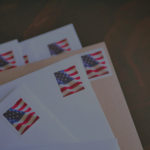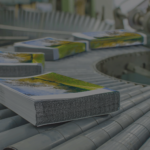
When is the Next Price Increase For Stamps?
August 30, 2024
Is Print Dead? Is Print Dying? The Answer Is…
September 30, 2024It’s a fact that while some businesses are able to create brochures that drive engagement and stick in the minds of customers, the majority of companies end up creating marketing materials that are unimpressive and discarded immediately. So what can you do about that? While design is a huge part, you also need to consider the thickness of a brochure.
The thickness of your brochure plays a critical role in its perceived quality and durability. Choosing the right paper stock can make a significant difference in how your message is received. The right paper thickness not only enhances the look and feel of your brochure but also conveys professionalism and attention to detail.
To ensure your brochure stands out, it’s important to select the paper stock that best aligns with your brand and purpose.
Brochure Paper Stock Options
Choosing the right paper stock involves understanding the different weights available and how they impact the final product.
- 70 lb. Text
This is a lightweight paper option that is often used for brochures that are meant to be mailed or distributed in large quantities. It’s durable enough for most standard uses while remaining cost-effective. - 80 lb. Text
Slightly thicker than the 70 lb. text, this paper weight offers a bit more durability and a premium feel. It’s a common choice for brochures that need to balance cost with quality. - 100 lb. Text:
This is a heavier text stock that gives your brochure a more substantial feel. It’s ideal for high-end brochures that need to convey a sense of luxury and quality. - 80 lb. Cover
This cover stock is thicker than text stock and offers sturdiness without being overly rigid. It’s often used for brochures that need to withstand handling over time, such as menus or product catalogs. - 100 lb. Cover
The thickest option among the standard brochure paper stocks, 100 lb. cover stock provides maximum durability and a luxurious, high-end feel. This option is perfect for brochures that are meant to make a strong impression.
Types of Brochure Paper & Substrates
The type of paper you choose also plays a significant role in the look and feel of your brochure.
- Coated Paper
Coated paper has a smooth finish that enhances the vibrancy of printed colors, making it a great choice for brochures with images or detailed graphics. Coated papers come in gloss, satin, or matte finishes and typically range from 70 lb. to 100 lb. thickness. - Uncoated Paper
Uncoated paper has a more natural feel and is easier to write on, making it suitable for brochures that require forms or notes. This paper typically has a thickness similar to coated paper but lacks the sheen, giving it a more understated appearance. - Natural Papers
These are eco-friendly options often made from recycled materials. They offer a unique texture and are usually thicker than standard papers, making them ideal for brands that want to emphasize sustainability. - Synthetic Papers
Synthetic papers are waterproof and tear-resistant, making them perfect for brochures used in outdoor settings or harsh environments. They’re available in various thicknesses, typically comparable to coated paper but with enhanced durability.
Selecting the right paper thickness and type for your brochure is essential for creating a lasting impression. By carefully choosing the appropriate stock, you can ensure your brochure reflects the quality and professionalism of your brand.
Contact Us Now for More Information
Phone: 724-837-0530



